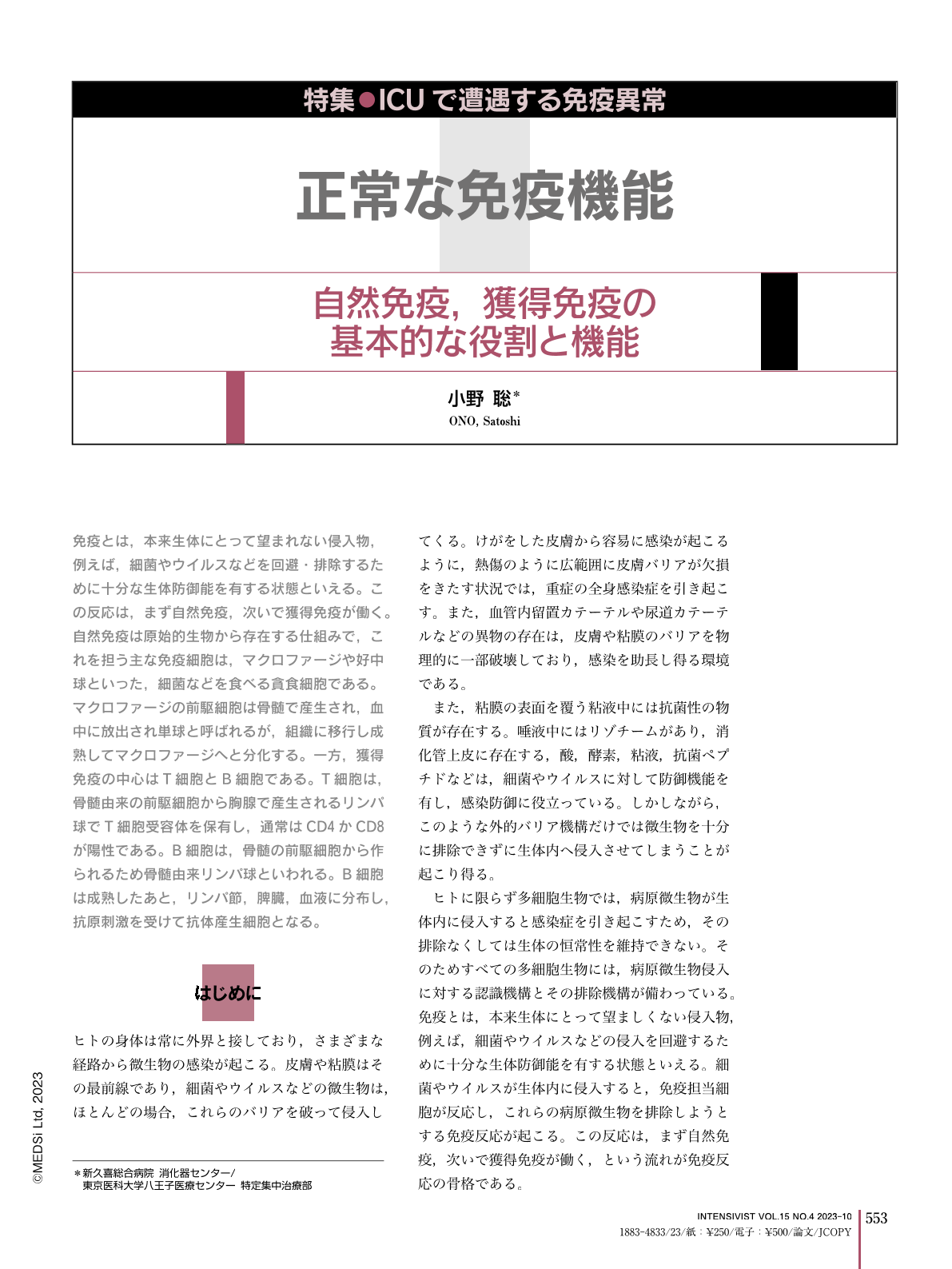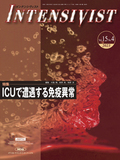Japanese
English
- 有料閲覧
- Abstract 文献概要
- 1ページ目 Look Inside
- 参考文献 Reference
免疫とは,本来生体にとって望まれない侵入物,例えば,細菌やウイルスなどを回避・排除するために十分な生体防御能を有する状態といえる。この反応は,まず自然免疫,次いで獲得免疫が働く。自然免疫は原始的生物から存在する仕組みで,これを担う主な免疫細胞は,マクロファージや好中球といった,細菌などを食べる貪食細胞である。マクロファージの前駆細胞は骨髄で産生され,血中に放出され単球と呼ばれるが,組織に移行し成熟してマクロファージへと分化する。一方,獲得免疫の中心はT細胞とB細胞である。T細胞は,骨髄由来の前駆細胞から胸腺で産生されるリンパ球でT細胞受容体を保有し,通常はCD4かCD8が陽性である。B細胞は,骨髄の前駆細胞から作られるため骨髄由来リンパ球といわれる。B細胞は成熟したあと,リンパ節,脾臓,血液に分布し,抗原刺激を受けて抗体産生細胞となる。
Immunity can be described as a state in which the body has sufficient biological defense capacity to avoid invaders that are inherently undesirable to the organism, such as bacteria and viruses. This reaction is first initiated by innate immunity and then by acquired immunity. Innate immunity is a mechanism that has existed since primitive organisms, and the main immune cells responsible for this are phagocytes, such as macrophages and neutrophils, which eat bacteria and other organisms. Progenitor cells of macrophages are produced in the bone marrow and released into the bloodstream as monocytes, which migrate to tissues and then mature and differentiate into macrophages. T cells are produced in the thymus from bone marrow-derived progenitor cells and possess the T-cell receptor, which is usually CD4- or CD8-positive. B cells are produced from bone marrow progenitor cells and are referred to as bone marrow-derived lymphocytes. B cells are distributed in lymph nodes, spleen, and blood and become antibody-producing cells upon antigen stimulation.

Copyright © 2023, MEDICAL SCIENCES INTERNATIONAL, LTD. All rights reserved.


